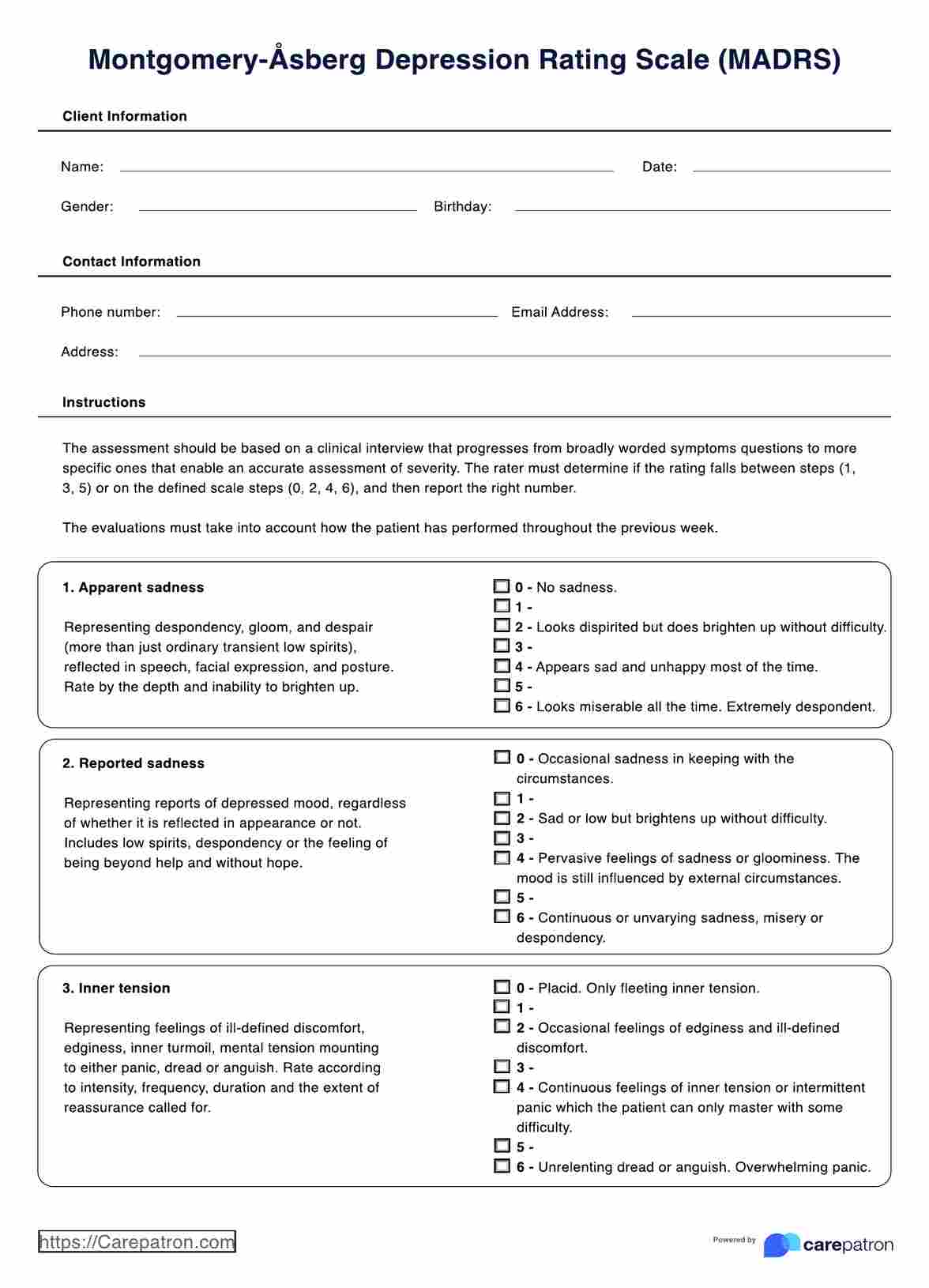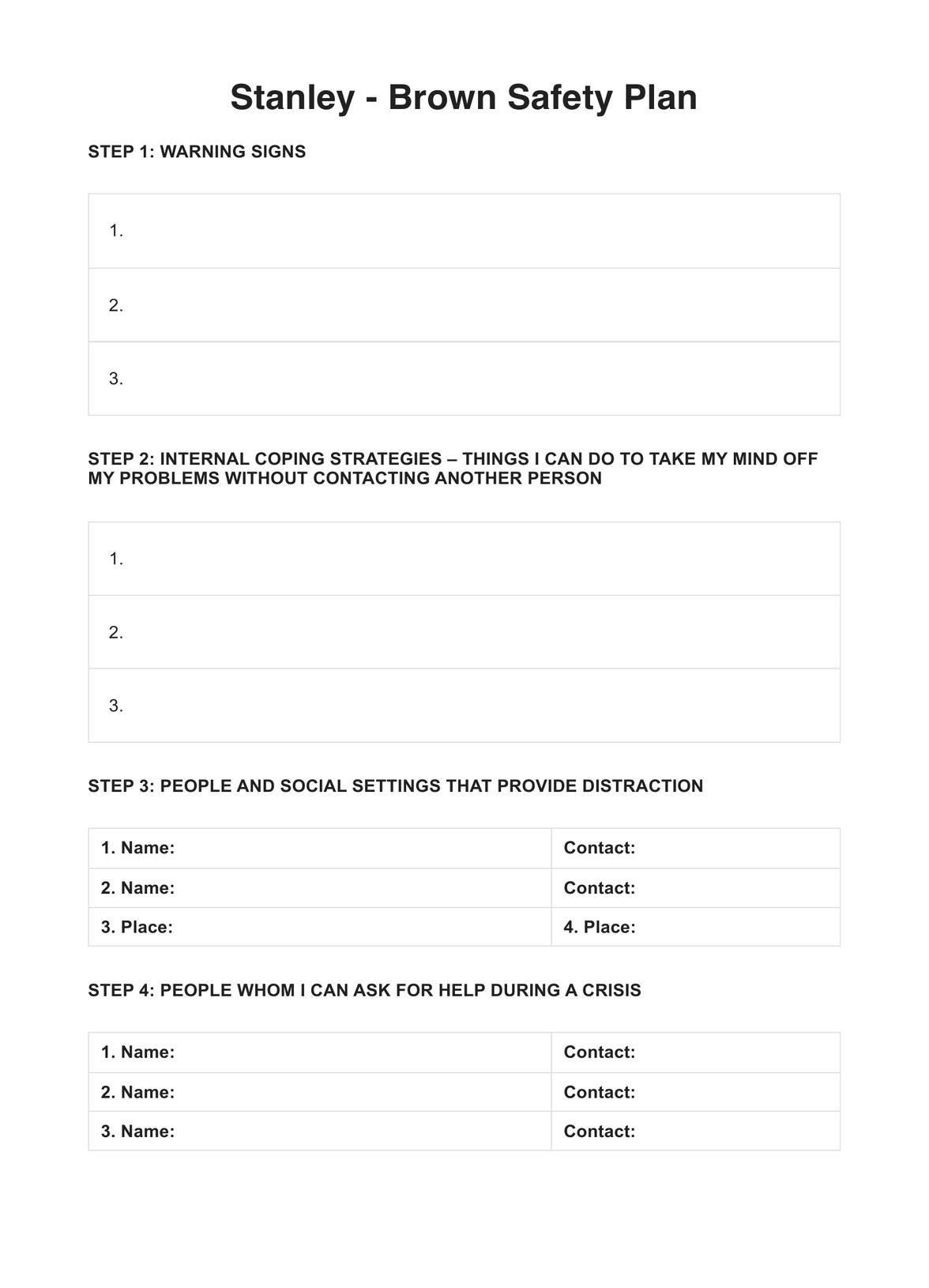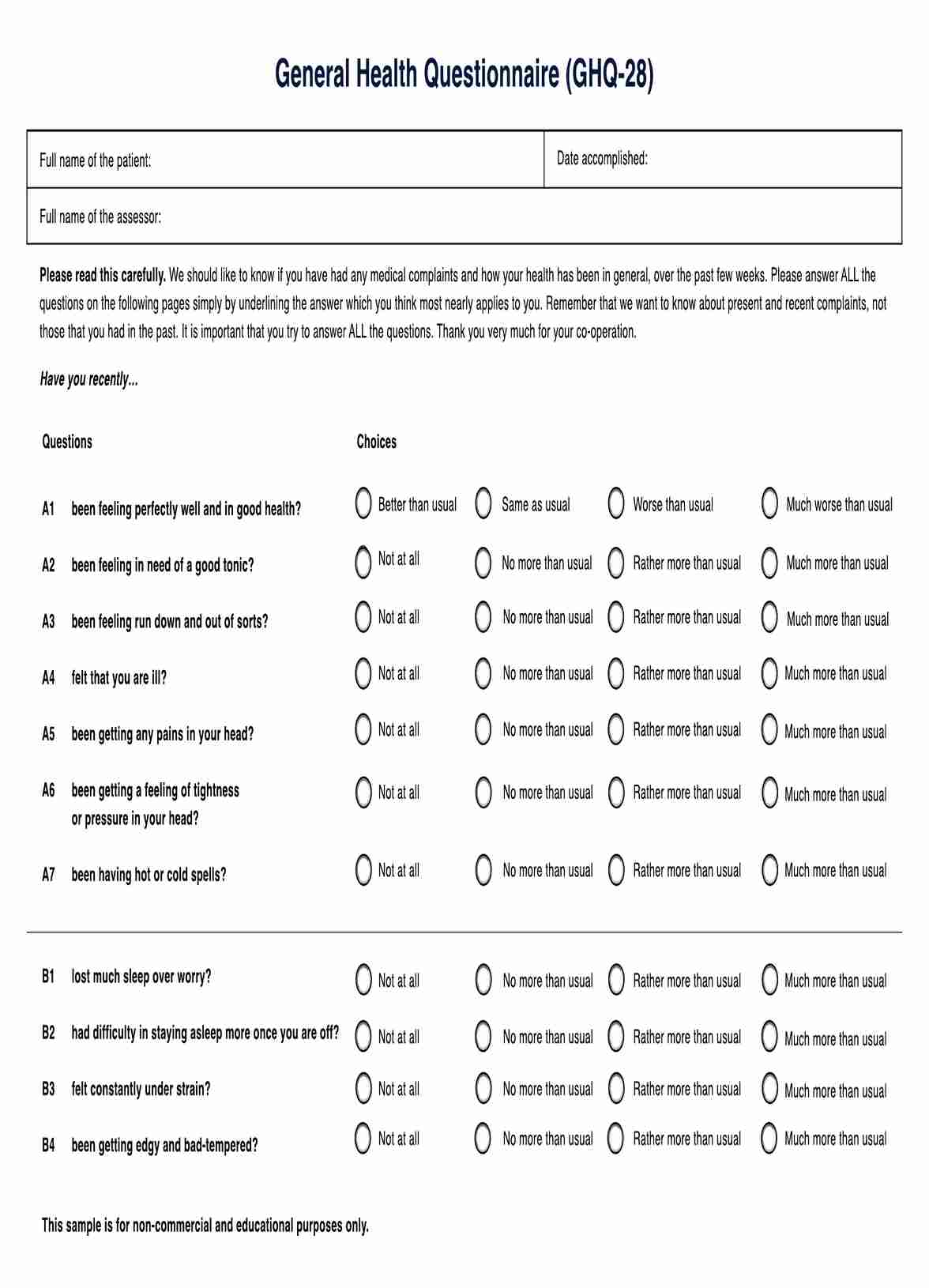Depersonalization/Derealization Disorder Treatment Plan
Explore a comprehensive Depersonalization/Derealization Disorder Treatment Plan. Learn about its effectiveness, who uses it, and when it's implemented.


What is a Depersonalization/Derealization Disorder Treatment Plan?
Depersonalization/Derealization Disorder (DPDR) is a complex mental health condition characterized by recurring episodes of feeling detached or disconnected from oneself and perceiving the world as unreal or distorted. Professionals working with clients who may be dealing with this disorder must have a comprehensive treatment plan in place.
Psychotherapy, especially cognitive-behavioral therapy (CBT), is often the primary treatment method. It helps clients understand their symptoms, change unhelpful thought patterns, and manage feelings of unreality. Other therapeutic approaches such as mindfulness-based therapies or Eye Movement Desensitization and Reprocessing (EMDR) may also benefit the client's needs.
While no specific medications are approved for DPDR, certain antidepressants, anti-anxiety drugs, or some antipsychotics may help alleviate symptoms in some cases. It's important to remember that medication should be considered as part of a broader treatment plan and not a standalone solution.
For a clearer understanding of DPDR, you can watch this explainer video.
To efficiently manage and track your client's treatment progress, consider using an Electronic Health Records (EHR) system. An EHR system like the one outlined in our Depersonalization/Derealization Disorder Treatment Plan can streamline client management, ensuring all important information is organized and easily accessible. This can significantly enhance your ability to provide effective, personalized care to your clients dealing with DPDR.
Depersonalization/Derealization Disorder Treatment Plan Template
Depersonalization/Derealization Disorder Treatment Plan Example
How does this Depersonalization/Derealization Disorder Treatment Plan work?
A Depersonalization/Derealization Disorder Treatment Plan is a comprehensive guide designed to help healthcare professionals manage and treat patients suffering from this disorder. Here's how you can use this plan:
Step 1: Understand the Condition
The first step involves deeply understanding DPDR, its symptoms, and its impacts on a patient's life. You should familiarize yourself with the latest research, treatment approaches, and potential medications that can alleviate symptoms.
Step 2: Patient Assessment
Thoroughly assess your patient's condition to understand their specific symptoms, triggers, and severity level. This will involve detailed conversations, diagnostic tests, and, potentially, referrals to specialists.
Step 3: Customize the Treatment Plan
Based on your assessment, customize the printable Depersonalization/Derealization Disorder Treatment Plan template to fit your patient's needs. The plan should detail the proposed therapies (like CBT or EMDR), any prescribed medications, frequency of appointments, and strategies for managing triggers or acute episodes.
Step 4: Implement the Treatment Plan
Start implementing the treatment plan with your patient. This may involve regular therapy sessions, medication management, and consistent check-ins to monitor progress.
Step 5: Monitor & Adjust the Plan
Continually monitor your patient's progress and adjust the plan as necessary. Every patient responds differently to treatment, so it's crucial to be flexible and adapt the plan based on their feedback and progress.
When would you use this Depersonalization/Derealization Disorder Treatment Plan template?
Depersonalization/Derealization Disorder (DPDR) is a challenging mental health condition to manage. The Depersonalization/Derealization Disorder Treatment Plan template is a crucial tool for healthcare professionals in navigating this complex condition. Here are the key moments when you'd want to utilize this template:
- Post-Diagnosis: Once a patient has been definitively diagnosed with DPDR, the treatment plan template can be used to formulate a comprehensive and personalized approach to care.
- Interdisciplinary Coordination: The template is not only useful for mental health professionals like psychiatrists, psychologists, and therapists but also for primary care physicians, neurologists, and psychiatric nurses. Using the same template ensures consistency in treatment approaches across different healthcare providers.
- Treatment Adjustment: The treatment plan should not be static; it must evolve with the patient's progress. When reassessing a patient's symptoms and response to treatment, the template can guide necessary adjustments to the plan.
- Patient Transition: If a patient is transitioning between healthcare providers or moving from pediatric to adult services, the template can clearly outline the current treatment plan to ensure seamless continuity of care.
- Emergency Situations: In case of acute episodes or crisis situations related to DPDR, having a well-documented treatment plan can guide healthcare professionals in providing immediate and appropriate care.
- Leveraging this treatment plan template can fortify your practice and increase client achievements.
Leveraging this treatment plan template can fortify your practice and increase client achievements.
What are the benefits of using this Depersonalization/Derealization Disorder Treatment Plan?
Using a Depersonalization/Derealization Disorder Treatment Plan offers numerous benefits for both healthcare professionals and patients. Here are some key advantages:
1. Comprehensive Care
A Depersonalization/Derealization Disorder Treatment Plan ensures that all aspects of the patient's care — from psychotherapy to medication management— are well-coordinated and tailored to their unique needs. This holistic approach can lead to more effective management of symptoms.
2. Consistency in Treatment
The treatment plan serves as a blueprint for care, providing consistency across different healthcare providers. Whether it's a psychiatrist, psychologist, or primary care physician, each professional involved in the patient's care can follow the same plan, ensuring a uniform approach to treatment.
3. Patient Engagement
Treatment plans can also promote patient engagement. By outlining the course of treatment, patients can better understand their condition and the steps to manage it. This can empower them to take an active role in their own care.
4. Monitoring Progress
A treatment plan provides an organized way to track a patient's progress over time. Regular updates to the plan can highlight improvements, identify areas where the patient may be struggling, and guide necessary adjustments to the treatment approach.
5. Research-Backed Approach
Many components of the treatment plan, such as cognitive-behavioral therapy (CBT), have been widely researched and found effective in managing DPDR symptoms. A study published in the Journal of Clinical Psychology found that CBT can significantly reduce symptoms of DPDR (Hunter, et al., 2005). Incorporating such evidence-based interventions into the treatment plan can enhance its effectiveness.
Commonly asked questions
Yes, a Depersonalization/Derealization Disorder Treatment Plan is effective. It provides a structured approach to managing the disorder, ensuring that treatment is personalized and adapted to the patient's specific needs. The plan incorporates evidence-based interventions, such as cognitive-behavioral therapy, which have been proven to be effective in managing DPDR symptoms.
A range of healthcare professionals use Depersonalization/Derealization Disorder Treatment Plans. This includes mental health professionals like psychiatrists, psychologists, therapists, and other healthcare providers involved in the patient's care, such as primary care physicians and psychiatric nurses.
A Depersonalization/Derealization Disorder Treatment Plan is implemented as soon as a definitive diagnosis has been made. It guides the course of treatment from the onset of care and is regularly updated based on the patient's progress and feedback.
A Depersonalization/Derealization Disorder Treatment Plan aims to provide a comprehensive, personalized approach to managing the disorder. It ensures that all aspects of the patient's care are well-coordinated and targeted towards their unique needs. The plan also serves as a tool for monitoring the patient's progress and adjusting the treatment approach as necessary.


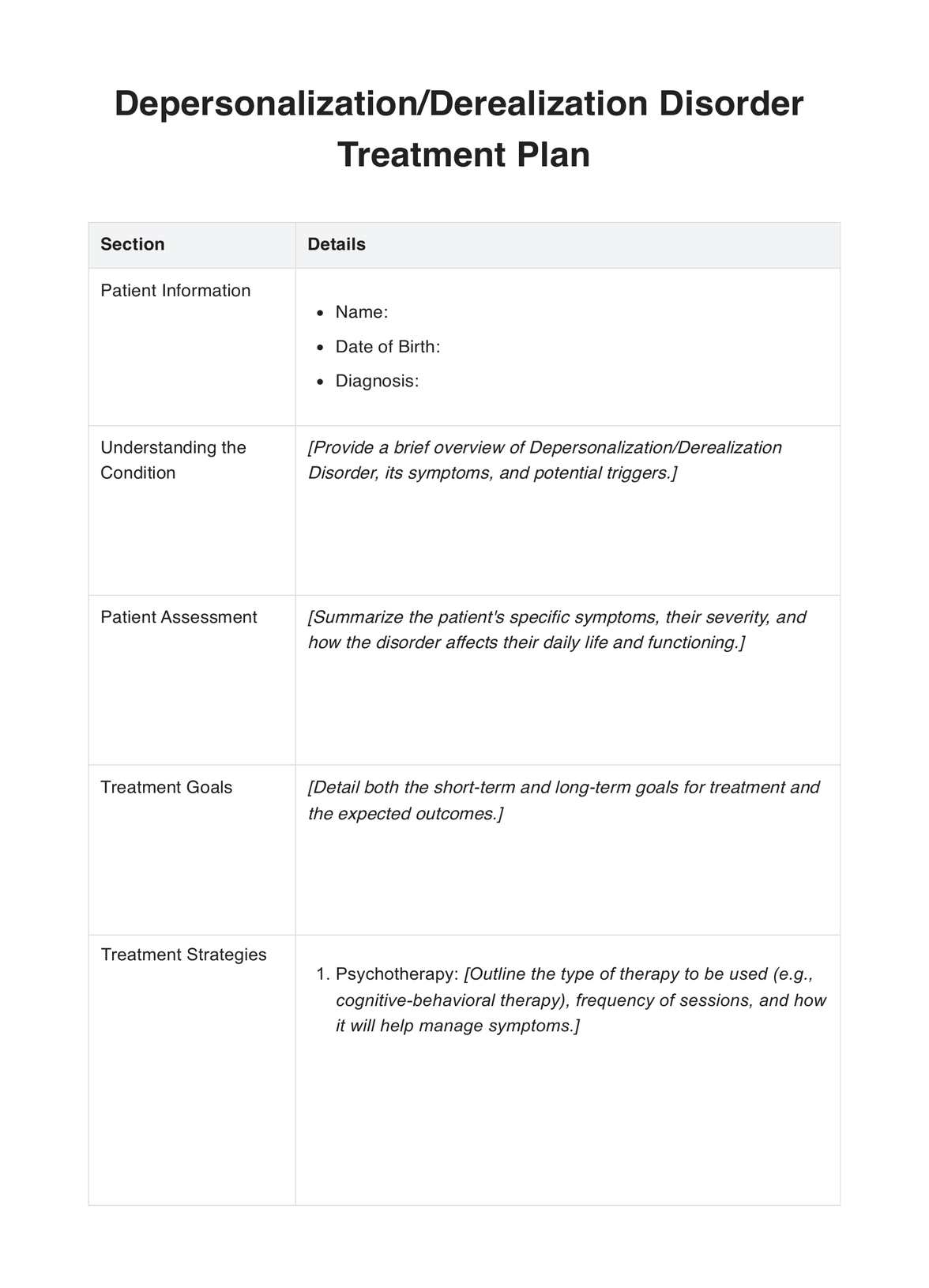
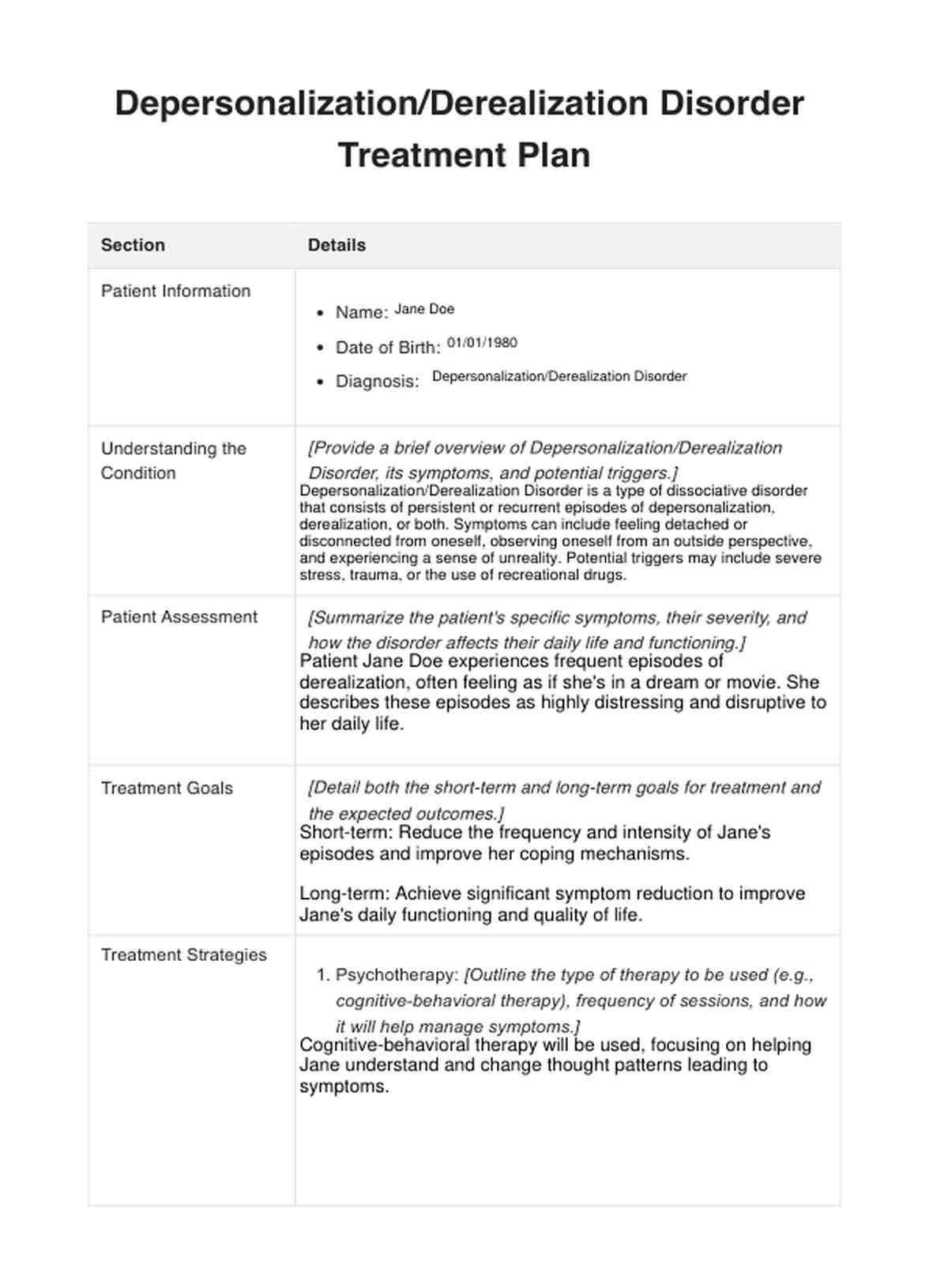















-template.jpg)





















































































